#air jordan legacy
Photo

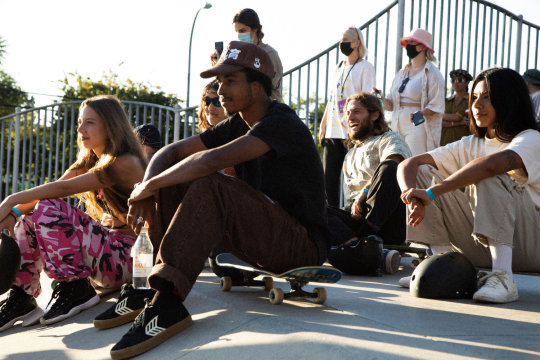
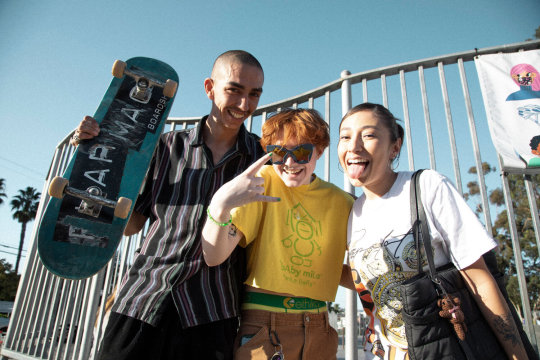
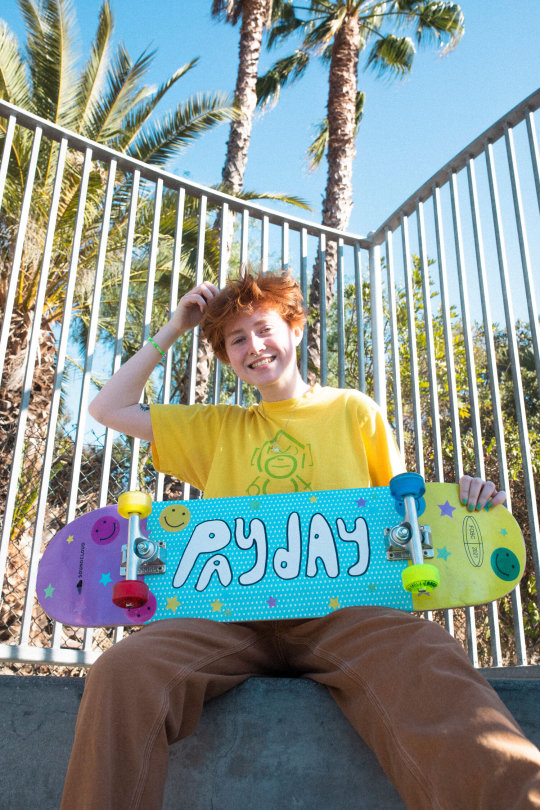


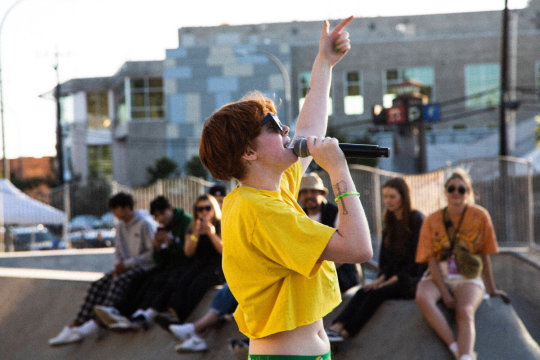

PAYDAY | MEET UP AND PERFORMANCE AT LA SKATEPARK
3 notes
·
View notes
Text
Michael Jordan's Net Worth in 2024
Explore Michael Jordan’s Net Worth in 2024, featuring an in-depth breakdown of his salary—revealing the precise figure that shapes his wealth. Gain unparalleled insights into his assets, exploring the factors driving his financial success. Follow us for more financial insights and comprehensive reviews at reviewsduniya.com.
At reviewsduniya.com, we provide insights into the factors behind…

View On WordPress
#Air Jordan Legacy#Basketball Icon Michael Jordan#Michael Jordan&039;s Athletic Achievements#Michael Jordan&039;s Basketball Achievements#Michael Jordan&039;s Basketball Career#Michael Jordan&039;s Brand Endorsements#Michael Jordan&039;s Business Ventures#Michael Jordan&039;s Charity Work#Michael Jordan&039;s Cultural Influence#Michael Jordan&039;s Entrepreneurial Success#Michael Jordan&039;s Impact on Basketball#Michael Jordan&039;s Impact on Pop Culture#Michael Jordan&039;s Legacy#Michael Jordan&039;s Philanthropic Contributions#Michael Jordan&039;s Sports Icon Status#NBA Championships#NBA Legend Michael Jordan#NBA MVP Awards#Philanthropy of Michael Jordan
0 notes
Text


via Solebox
Jordan Legacy 312 Low ‘Chicago’
40 notes
·
View notes
Photo

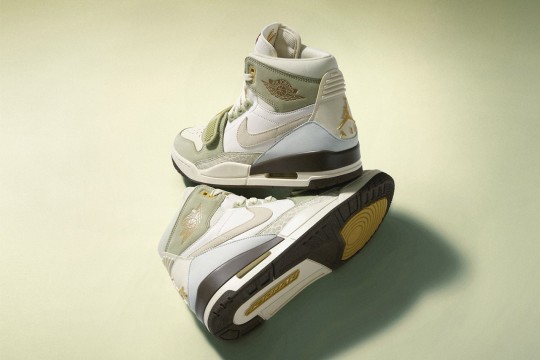




Jordan Brand Presents "Year of the Rabbit"
3 notes
·
View notes
Photo
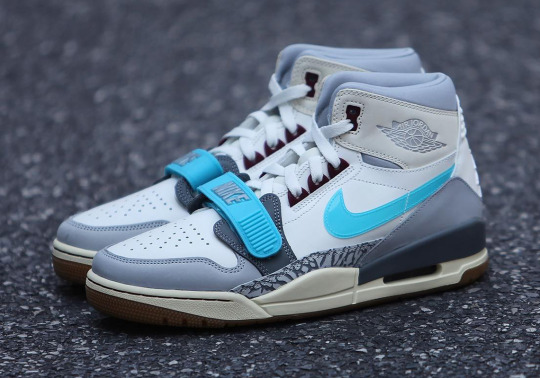



Jordan Legacy 312
#Jordan Legacy 312#Jordan Legacy#Legacy#Legacy 312#Jordan#Air Jordan#AJ#AJ Legacy#Air Jordan Legacy 312#Sneaker#Jordan Sneaker#Sneakers#2022#Blue#Gum
2 notes
·
View notes
Text
Shoes i think the hogwarts legacy characters would wear in the modern day
(based on absolutely no evidence - and solely my deranged brain)
Sebastian

Jordan’s addict, is really insistent about not creasing them, creases them on accident anyways. Aspiring sneakerhead but only in theory because he doesn’t have enough to splurge. Prefers mids/highs rather than lows.
Ominis

I’m gonna be so honest I just looked up “fancy ass shoe” and picked the most boring one. This dude probably has them handmade and gets them shined regularly. I love him to death
Natsai

Cute, vintage, and practical. She needs something that’s versatile but also has some traction for her adventures around and outside the castle. I’ve always imagined Natty has really good style, and is a bit more femme so I think this is a good balance.
Poppy

Converse girlie! But she scribbled all over the tongue, or threads little patterns into the sides. She likes to get experimental with them, and each pair she owns has its own theme.
Imelda

Exclusively wears her shitty beat up air force 1’s and nothing else. She’ll wear them to a damn ball and to practice in the same day. Doesn’t even try to wash them. Girl. Get some new shoes.
Amit

The grip these have on him is unreal. I don’t have a justification for this, it’s just so him. He would 100% wear these with some astrological patterned socks that don’t match and clash terribly.
Garreth
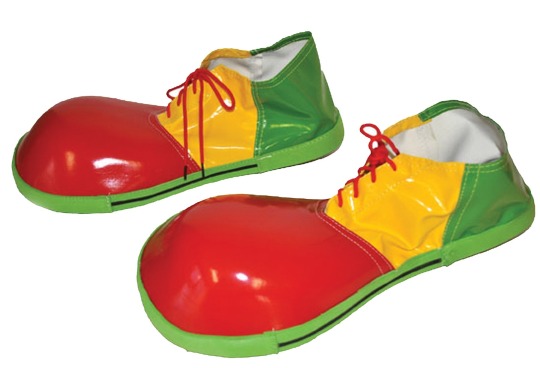
yeah
#hogwarts legacy#sebastian sallow#ominis gaunt#garreth weasley#natsai onai#natty onai#poppy sweeting#amit thakkar#imelda reyes#hphl#hogwarts legacy meme#hogwarts legacy headcanons
185 notes
·
View notes
Text
due to the cape comic model and carol's identity as a non-powered civilian love interest, she is only able to exist in relation to star sapphire, ferris air, and/or hal jordan—thus reducing her to her loss of autonomy, the legacy she feels trapped in, or a prop for the male main character. despite being a nuanced, engaging character in her own right, the medium from which she originates ensures that she will never be treated as such. and that imo is the great tragedy of carol ferris as a character.
#i've thought long and hard about this#carol is never going to get a solo as a civilian and it would be reductive for her become star sapphire or otherwise powered#carol ferris#dc#*meta#🌃.txt
23 notes
·
View notes
Text
Top 10 Movies of 2023
10. The Creator - It had a really poignant message about how far we can take technology. Can we replicate the human experience but have it be placed in a human body. It raises the questions about what the future of warfare will look like. Add in some of the most stunning visuals that have been seen in a sci-fi movie, and the final product leaves you in a debate. One that does not have a wrong answer.
9. Scream 6- Jenna Ortega and Melissa Barrera return as the Carpenter sisters, and this film takes the franchise to a new location. Changing up the scenery allowed for fresh thrills to be infused into this series and created a new level of tension. It was a very solid entry as it developed the legacy characters more and continued to give depth to the new core 4. Very good movie.
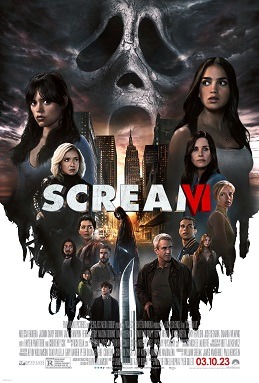
8. Talk to Me- One of the most original horror films that has been released in a long time. It plays on themes of loss, the supernatural, what happens after death and contact with the world beyond our own. It is well made, well acted and completely immerses you in this unique premise. This is a gem among other films that thankfully makes the list due to other films being pushed back beyond 2023.
7. The Killer- Fassbender is a revelation in this stylish action thriller. It may have a simple plot but sometimes all you need to do is breathe fresh life into something that has been done before. Fincher relies on the fast talking narrative and multiple set pieces to beautifully craft this story that plays out before us. It works and excels because you connect with the story and want to see how it plays out.
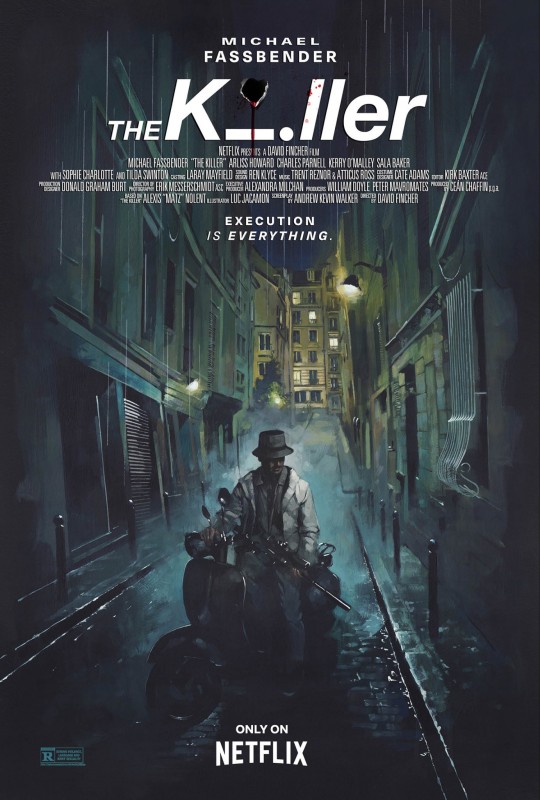
6. The Super Mario Bros- This film sat atop the list for a long while but ultimately found itself bumped down. It is such a fun experience for anyone who grew up with the games and a delight to share with the younger generation. This is the single movie from this year that has played the most in my household. It holds so much Nostalgia and brings such a smile to my face.
5. Air- Ben Affleck brings this story to life in such a compelling manner. For anyone who followed MJs career this story is not new. For those who have forgotten MJ used this platform to become the single most recognized athlete of all time. This story, this deal and how it played out changed the landscape of the name, image, likeness game. The Air Jordan symbol is truly iconic and now this film will fully cement that legacy within cinema. Absolutely the kind of film we need more of.
4. Oppenheimer- When Nolan's career is said and done there will be so many achievements we can look back upon. This one will be considered the most important due to the historical nature of it. The way Nolan paints the picture of how this all came to be is a crowning achievement in film making and could likely win the director a slew of awards. Nolan knows how to make a stunning film while getting the most out of his cast and he was some amazing talent to choose from here.

3. Spider-Man: Across the Spiderverse- Miles Morales is my favorite Spider-Man and this movie continues to showcase all the reasons why he is a phenomenal character. The sequel also added more layers to how the multiversal aspect of it all works. Easily some of the best animation we have ever seen. This film is on the short list for best picture at the Oscars and definitely deserves all the praise it is getting.
2. Teenage Mutant Ninja Turtles: Mutant Mayhem - No kid grew up in the 80s and 90s without knowing who the Ninja Turtles are. Now we have them present for the next generation and what a treat it was. There was so much story and world building in just over 90 minutes. You could feel the chemistry among the actors as well as they brought the brothers to life. The animation was once again on point, and the stellar cast overall helped bring the classic characters to life. This is the TMNT movie we have been needing for the last decade or more.
1 Killers of the Flower Moon- This 3.5 hour long Martin Scorsese epic told probably the most heartbreaking story of the year. What we see in this movie is the death and betrayal of the Osage people. Led by Leonardo DiCaprio and Lily Gladstone this is the type of story that needs to be told to help educate people on the past. The Osage murders were about greed and corruption. Scorsese continues to make films with bold statements and that will help preserve the truth about history.
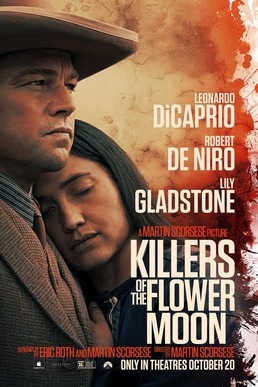
#The Creator#gareth edwards#john david washington#Scream 6#jenna ortega#melissa barrera#Talk To Me#The Killer#david fincher#Michael Fassbender#the super mario bros movie#Nintendo#Air#Michael Jordan#Nike#Ben Affleck#Matt Damon#oppenheimer#Christopher Nolan#Cillian Murphy#Spider-Man#across the spiderverse#Miles Morales#teenage mutant ninja turtles#Mutant Mayhem#killers of the flower moon#leonardo dicaprio#martin scorsese#lily gladstone
9 notes
·
View notes
Note
Number 45 (You’re just like your father.) pleaaaase?
"You're just like your father."
Harper's icy words slice through the air like knives. The members of the board shuffle in their seats, uneasy, as Jackson lowers his head, the shame burning his cheeks. Okay, he's just been caught dozing off in front of the most eminent members of the Harper Avery Foundation, but for his defense, he's only 17, and the old guy droning on about the latest advancies in macrovascular surgery has to be the most boring person alive.
His mother elbows him, telling him to pay attention, and he tries to ignore her. He doesn't know what hurts more, the cold disdain on his grandfather's face or the fact that he's just been compared to the person he hates the most, the man who always promises but never delivers, the father who one day decided to forget he had a son. His grandfather could have just asked him a question, or told him to be attentive, because of legacy, the future of medicine and all that, but no. The old man had to go there, to remind him that there's no bigger disappointment than Robert Avery, and that Jackson is next in line in his eyes.
But he's not going to let Harper see how deep his words cut him, so he clenches his jaw, stares straight ahead, and listens to every single word for the remainder of the board meeting.
___
"Now you're just like your father!"
He first hears the glee in April's voice as she laughs with her daughter before the words really register. Harriet is showing off her new outfit with a twirl, and his little girl's smile ignites something in him that makes him feel whole every single time.
She runs towards him, and he wonders why she's so adamant to show him what April has bought her during their shopping session of the afternoon. Harriet stops a few feet from him and gestures towards her feet.
"Look daddy, now we have the same sneakers! We're twins!"
He looks down to see she's wearing little red and black Air Jordans. In fact, they're the exact same pair he's bought for himself a few weeks ago, and the sight is enough to melt his heart, the way a grown man's heart should not melt (at least not at the sight of sneakers). He smiles at his daughter and then looks at April, who just shrugs.
"I know, I said it's useless to buy brand names when she's going to outgrow them in a few weeks, but she wanted to match with daddy, and well..."
He tickles his daughter and traps her in his arms, reveling in her joyful shrieks. Looking at April, at the warmth of her smile and her eyes, he can only return her grin before closing his eyes and hugging his daughter even closer.
30 notes
·
View notes
Text
The Lost Children mini has the potential to be so good actually.
I know I've been rambling a lot about Judy Garrick but even beyond my Flash fixation the entire idea of this is just exciting.
To kick it off you have Emiko and Courtney headlining this thing as the leads which is fantastic.
A) Stargirl is the JSA's kid and I always love whenever she's involved with JSA stuff
B) Geoff Johns is writing her and, regardless of what you think of Johns or his writing, I'm always interested to see what he does with Courtney. You have to remember that he created her character and he made her in the memory of his dead sister, Courtney Johns, who tragically died at 18 in an explosion. Stargirl, as far as I'm concerned, is Geoff's character and there is no doubt in my mind that he will always treat her with the respect she deserves.
C) Emiko is Seven Soldiers legacy babey~ I love that we are recognizing the rich golden age lore and their modern day legacies. It's amazing. I find that the Flash fam, the GL's and the Beetles are really good at recognizing the legacy aspects of their mantles but it doesn't seem to be super common in general. So hell yeah! I'm pumped that DC actually remembers that Green Arrow was around in the Golden Age doing stuff!
And then beyond that? Bruh the deep cuts are 10/10. Jimmy Martin? Secret? Helena Wayne? (not that she's a deep cut but still)
I'm so down to see Greta in comics again! Why is she dead! Why is she a golden age hero! Idk but I'm excited to find out!
And yo, Jimmy? My boy Jimmy? Hell. Yes. Baby boy. Baby. Also if he comes back I'm pretty sure he'd be Jesse Quick's step son. Because I'm pretty sure Rick would have to be Jimmy's guardian. And sign me TF up for that. Add him to Flash family hell yeah.
Also do people understand the implications of Helena existing? This is main universe Helena Wayne. She's from a decade in the future. She's like 10 a decade in the future. You guys realize that means Bruce and Selina are having a baby, like, now, right?
There's also Hal Jordan aka Air Wave. Yeah his name is Harold Jordan and he goes by Hal and he flies. Sounds familiar, right? Good. It should. Because he's Hal Jordan aka Green Lantern's little cousin.
And these are just some of the kids. There are so many kids.
This is gonna be great
#I'm honestly wondering if the kids are just in the present now after this and thats just that#or if they'll put the kids back in their correct times and the changes to history will then be the New Golden Age#because that would explain Greta. shes not dead again shes just Greta pre YJ#dc#dc comics#new golden age#emiko queen#red arrow#stargirl#courtney whitmore#jsa#hal jordon#green lantern#helena wayne#selina kyle#bruce wayne#Batman#Catwoman
61 notes
·
View notes
Text
'...53. Six Feet Under
HBO
2001-05
The difficulty in looking at the legacy of “Six Feet Under”? Five seasons of exceptional television are inevitably overshadowed by 10 minutes of perfect television. Creator Alan Ball’s series follows the lives of the funeral home-operating Fisher family and those in their orbit, while exploring both the profound and the mundane in death. The final moments of “Six Feet Under,” a succession of emotional jolts underscored by a soulful Sia ballad, felt in the moment surprisingly daring. But, looking at a series that for its entire run had been keenly observed but startlingly openhearted, one might say that the show died the way it lived.
50. My So-Called Life
ABC
1994-95
It’s rare for art made by adults to perfectly nail the angst, anguish and hope of being a teen. While series like “Beverly Hills, 90210” were giving high schoolers a glossy, sexy view of adolescent life, Winnie Holzman’s “My So-Called Life,” which starred Claire Danes as 15-year-old Angela Chase in lovelorn pursuit of her crush, Jordan Catalano (Jared Leto), offered something more grounded and tangible. The show’s sole season is distinctly of its time, but “My So-Called Life” has something for teens (and former teens) today too. It’s a series about thrilling and heart-wrenching experiences — first love, coming to understand your parents and trying to understand your own frenzied emotions.
32. Lost
ABC
2004-10
What’s in the hatch? Who are the Others? Where did that polar bear come from? Yes, “Lost” hooked tens of millions with tantalizing mystery box questions like these. And yes, many of the answers showrunners Damon Lindelof and Carlton Cuse ultimately provide don’t quite live up to that fervor. But what made the show was its vibrantly rendered characters, dozens upon dozens of them — Hurley (Jorge Garcia) and Sayid (Naveen Andrews), Juliet (Elizabeth Mitchell) and Sawyer (Josh Holloway), Sun (Yunjin Kim) and Jin (Daniel Dae Kim), Locke (Terry O’Quinn) and Ben (Michael Emerson) — all striving to make sense of their upside-down circumstances within an expansive, rip-roaring, fabulously weird adventure. It was a flawed show, sometimes deeply so, but between its characters and, yes, those damned questions, “Lost” engaged its audience like no other, precipitating the online ecosystem of fevered fan theorizing that dominates how so many of us experience our favorite shows today.
21. Game of Thrones
HBO
2011-19
There was no bigger television show in the 2010s than HBO’s adaptation of George R.R. Martin’s epic fantasy novels. Created by David Benioff and D.B. Weiss, the fantasy epic pulled viewers into the cutthroat world of Westeros, a land rife with myths, legends, warring families and magical dragons. It was an enormous undertaking and a feat: Despite its relatively humdrum ending, “Game of Thrones” redefined television with its depictions of violence, sex and gore, and with its frank assessment of what it takes to rule. The series examined the universal lust for power, and within its spectacle drew complex portraits of the people who would tear the world apart for their chance to sit atop the coveted Iron Throne...'
#My So-Called Life#Jared Leto#Claire Danes#Lost#Game of Thrones#George R. R. Martin#David Beinoff#D.B. Weiss#Evangeline Lilly#Matthew Fox#Josh Holloway#Six Feet Under#Alan Ball#Damon Lindelof
3 notes
·
View notes
Text
My Gang To Me 2023
In honor of this all-important fandom anniversary (17 years since the show first aired, and 831 years since the day Robin rescued the Locksley Four), I have written RH fanfic for the first time in over a decade!

Legacy (415 words; one shot)
The boy huffs, annoyed. He yanks his hand out of his father’s larger one and kicks a pebble across the cobblestones.
“I’m bored.”
The father chuckles and ruffles the boy’s hair. “Patience, habibi. We’re on a quest. These things take time.”
Time, the boy thinks. It took six hours to fly from Jordan to London, two hours on a train from London to Nottingham, another hour on the road from there. All that time, just to wander around an old church yard?
“Why are we here anyway?”
“Ah.” The father stops, looks down at his son, indulgent. “It’s a tradition, see. My father brought me here when I was your age, and his father brought him, and his father’s father, and so on.”
His curiosity piqued, the boy prods the father for more. “Is that the quest? Are we looking for treasure?” He scuffs the ground with his feet, eyes wide. “Is it buried under here? In the church.”
The father laughs, the sound reverberating across the old stones of the churchyard. “Not that kind of treasure. We’re here to find our legacy.”
He notes his son’s confusion and grabs his hand. “Come with me, I think I know where it is.”
They find it under the arching boughs of an old yew, a short pillar of moss-covered stones, unremarkable, maybe even forgotten. The boy frowns. “Is this it?” He scratches his head and squints up at his father. “What is it?”

“It’s a memorial. Like a marker. To honor a man who lived a very long time ago.”
The boy nods. This feels solemn, so he keeps his voice down, even though they are all alone in the church yard. “What was his name?”
“Will Scarlett.”
The boy repeats the name a few times, letting the foreign sound--Scarlett, Scarlett--roll around his mouth. “Was he important? Like a king?”
The father leans over and whispers. “No, even better. He’s our ancestor!”
The boy’s eyes widen in shock. “But…how? We’re not even from here.”
The father smiles, his lesson in legacy just beginning. “There’s a story. Would you like to hear it? It might take a while.”
“I have time!”
Time, the father thinks. It took years of war to force a young Saracen woman to journey to England, and even more years of privation for a poor Englishman to follow her to the Holy Land, and then more than 900 years of birth and love and injustice and death and birth again to bring it all back together, the true legacy of a band of never-quite-forgotten outlaws.

#my gang to me 2023#bbc robin hood#we'll always have robin hood#will scarlett#djaq#otp of pigeons and pain#never forget the outlaws
10 notes
·
View notes
Text
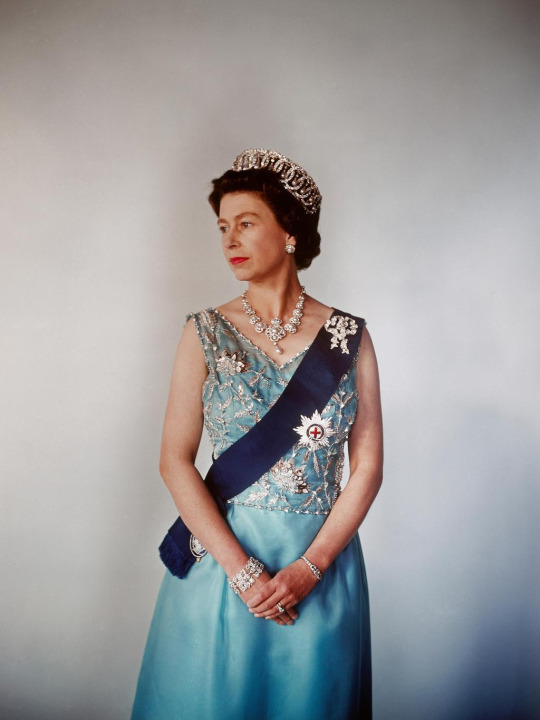
QUEEN ELIZABETH II
By Steve Dougherty and Larry Sutton | Published 17 September 2022
Time Magazine International Edition
QUEEN ELIZABETH II WAS THE WORLD’S LONGEST-serving head of state when she died at 96 on Sept. 8. She had led her subjects for more than seven decades—an extraordinary reign that began in 1952, and spanned 15 British Prime Ministers and 14 U.S. Presidents. She inherited the throne of a country almost broken by the legacy of war, and remained upon it through a time of epochal change for both the U.K. and the world.
When Elizabeth took the throne, the U.K. was the seat of an empire that straddled the globe. Today, Britain is a smaller player on the world’s stage, but she remained the sovereign leader of 15 nations—including Australia, Canada, and New Zealand—and head of a Commonwealth of more than 50 nations. She traveled the globe as an ambassador for British achievements, acts of charity, and values. She was also devoted to upholding the “special relationship” between the U.K. and the U.S., engaging with every President from Harry Truman to Joe Biden over a period of more than 70 years. And even as the world changed in profound ways, many saw her as a steadfast rock of patriotic duty. As her grandson Prince William wrote in the preface to a 2015 biography, “I think I speak for my generation when I say that the example and continuity provided by the Queen is not only very rare among leaders but a great source of pride and reassurance … I am privileged to have the Queen as a model for a life of service to the public.”
ELIZABETH ALEXANDRA MARY WINDSOR was born by cesarean section at 2:40 a.m. on April 21, 1926. She was an heir to the throne, but third in the line of succession. Her father Prince Albert—Bertie to friends and family—was the second son of the reigning monarch, King George V. His older brother David, known by his royal appellation Edward of Wales, was first in line to the throne—but also single, childless, and already rumored to have little interest in inheriting his father’s crown.
The early life of Princess Elizabeth was chronicled with zeal both by the British press and in the former colonies. “The water was from the River Jordan,” TIME reported of the elaborate christening pageantry staged in the private chapel at Buckingham Palace. Sir Winston Churchill first met Elizabeth at Balmoral Castle in 1928, when she was 2, and proclaimed that he saw in her “an air of authority and reflectiveness astonishing in an infant.”
No one in the realm was more enamored with the young Elizabeth than its monarch, who gave her the place of honor on his lap when they rode through the streets of London in his royal stretch Daimler. “No one else except the Queen rides out so often with the King,” TIME reported. Left out of the spotlight, not ungladly, was Lilibet’s father—the self-deprecating Bertie, who once told reporters, “My chief claim to fame seems to be that I am the father of Princess Elizabeth.”
Her reign as only child ended at age 4, in 1930, with the birth of her sister, Margaret Rose, at Glamis Castle in Scotland, their mother’s ancestral home. The girls romped together on the palace grounds and royal country estates, played with their terrier puppies and corgis—Elizabeth’s lifelong favorite. They also stabled, cared for, and learned to train a royal succession of pet ponies, and shared the same nannies and governesses.
In January 1936, upon the death of Lilibet’s grandfather George V, her uncle David became King Edward VIII. Almost immediately, his eldest niece and all the royal family became prime players in a 20th century succession drama. Edward’s tumultuous 10-month reign as King ended on Dec. 10, 1936, when he scandalized the world by abdicating the throne to marry the twice-divorced American socialite Wallis Warfield Simpson. “I always told those idiots not to put me in a golden frame,” he said. Young Lilibet was only 10 when she learned she would become Queen after her father’s death.
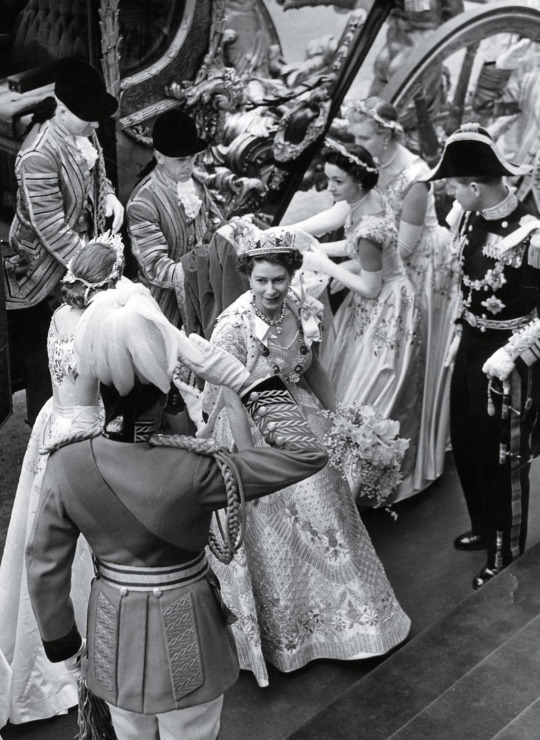
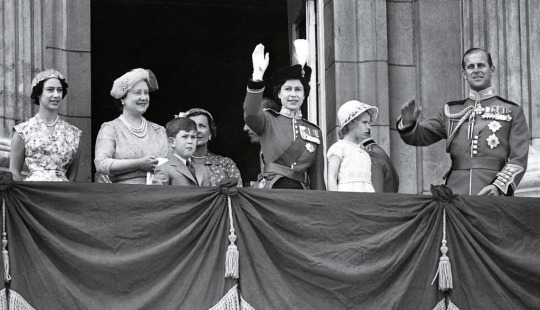
ELIZABETH WAS BARELY A TEENAGER when, on Sept. 3, 1939, Britain declared war on Nazi Germany. The war’s threat had already thundered throughout Europe, and soon the kingdom Elizabeth would one day rule, along with much of the rest of the world, was engulfed in war. Less than a year later, Hitler entered Paris and promised to make Britain his next conquest. Soon the Blitz—day and night Luftwaffe bombing raids that rained fire and terror over cities throughout England—was at full roar.
And so the Princess spent her teens knitting socks for British soldiers, collecting tinfoil, and rolling bandages for the war effort. She would send portions of her 5-shilling weekly allowance to emergency child-welfare funds, wear secondhand clothes, adhere to the war-rations diet dictated for all Britons, and live frugally despite being a teenage Princess and heir to the British throne.
Even as bombs fell on Buckingham Palace, the royal couple refused entreaties to abandon London and evacuate Princess Elizabeth and Princess Margaret to Canada. “The children won’t go without me,” said the Queen. “I won’t leave without the King. And the King will never leave.”
The King’s decision to remain in England for the duration of the war, enduring its deprivations along with his subjects, endeared him to the beleaguered nation. But it also made the likelihood that Elizabeth might suddenly be called to the throne in the event of her father’s death seem palpable.

The future monarch began her public life with her first live BBC radio broadcast in October 1940. Displaying poise and pluck, she addressed the tens of thousands of children who were evacuated from their homes and separated from their families at the height of the Blitz. “My sister, Margaret Rose, and I feel so much for you as we know from experience what it means to be away from those we love most of all,” she said in a clear voice that offered a hint of the calm and compassion that many would come to admire.
When in 1944 she reached military age at 18, Elizabeth joined the Auxiliary Territorial Service, one of the wartime women’s units. She spent three weeks at the Mechanical Transport Training Center, where she trained as a mechanic and truck driver. The labor left her covered in grease and grime and not a little well-earned pride.
And she never partied so hard as she did a fortnight after her 19th birthday when, on May 8, 1945—Victory in Europe Day—she joined the ecstatic and rowdy street celebrations that swept London following Germany’s surrender. After standing in uniform on the balcony at Buckingham Palace to greet cheering crowds alongside the King, Queen, and Prime Minister Winston Churchill, she, her sister, a group of friends, and a few guardians linked arms and ran among the crowds that surged through the city. For two nights in a row she “walked simply miles,” she wrote in her journal, “ate, partied, bed 3 a.m.!” These were, she would say 40 years later, among “the most memorable nights of my life.”
YEARS BEFORE, ELIZABETH had visited a naval college at Dartmouth where she had been greeted by a towering 18-year-old cadet.
Prince Philip of Greece and Denmark was born on the Greek island of Corfu on June 10, 1921, nephew of King Constantine of Greece and distant relation to Britain’s Queen Victoria. As his family drifted apart he was sent, at the age of 9, to England to live with his grandmother, the widow of the great British naval commander and German Prince Louis Alexander Mountbatten. He was schooled in England, Germany, and Scotland, and became a fine young athlete—as Elizabeth would note to her governess, Crawfie, on that trip to Dartmouth: “How good he is, Crawfie. How high can he jump!”
Elizabeth corresponded with Philip throughout the war, and after its end the Prince was placed on shore duty at a naval base on England’s south coast. He often made the 100-mile trek to London in his small black MG, frequently stopping at Buckingham Palace. As the friendship grew into a romance, Elizabeth was delighted. Her father George? Not so much—at first. “His loud, boisterous laugh and his blunt, seagoing manners … irritated the gentle King,” TIME reported in 1957. Despite that chill, Elizabeth and Philip decided to marry after a short stay with her family at Balmoral Castle in the summer of 1946. The King’s lack of enthusiasm for Elizabeth’s beau—an attitude sparked, in part, by his concern over how the people of Britain would take to a foreign-born prince marrying the heiress to the throne—frustrated the Princess. “There was many a tense moment for George as Elizabeth moped about in tearful martyrdom while her mother and grandmother, the doughty old Queen Mary, fought her battle for her. At last, George decided that the young couple (she was 20, he 25) should wait six months to make sure of each other,” noted TIME.
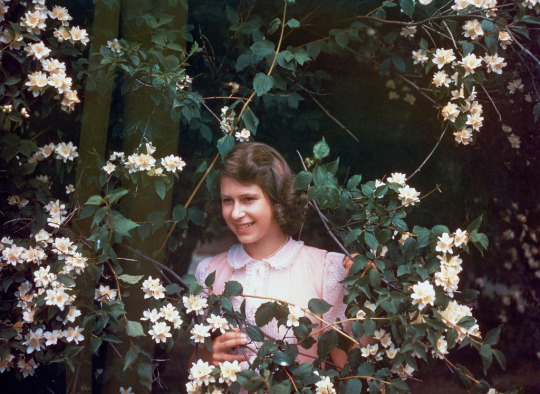
There were obstacles to overcome, but none insurmountable. Philip became a British citizen, and public-opinion polls showed that a majority of the nation’s populace favored his marrying the Princess. The official announcement did not come until July 9, 1947, followed by the couple’s introduction at a Buckingham Palace garden party. The wedding took place that November, on the 20th. Philip had converted from Greek Orthodoxy to Anglicanism, and Elizabeth’s father made the former member of the Greek and Danish royal families a British royal duke, the Duke of Edinburgh, to be called His Royal Highness, or simply Prince Philip.
As Elizabeth made her way to Westminster Abbey in the royal coach on her wedding day, thousands cheered from the neighboring sidewalks of London. Celebrations erupted throughout the globe, from Paris to Panama, from Shanghai to Manhattan—where thousands got out of bed at 6 a.m. to listen to the ceremony broadcast on the radio. Dignitaries—five Kings, six Queens, Prime Minister Clement Attlee, Winston Churchill—were in attendance. All of Britain celebrated, many seeing the wedding as a beacon of hope in the post–World War II recovery period.
ON FEB. 5, 1952, Princess Elizabeth went to bed in a tree hut nestled in Kenya’s Aberdare National Park and awoke the next day as the Queen of England. She was unaware of her new position, for news of the death of her father King George VI had not yet reached that outpost of the British Empire. That afternoon, at a lodge, Philip received a phone call informing him of George’s death. The Prince took his bride down to a nearby river’s edge and relayed the news. Shaken, but in full command of herself, Elizabeth returned to the lodge and began making arrangements for the long trip home.
Elizabeth arrived at London’s airport the following morning. Churchill was there to greet her, along with a small group of privy councilors—advisers to the monarchy. That night she rested; the next day she signed the oath of accession before the Privy Council, and an hour later her accession was formally proclaimed. In the months that followed, there was no hurry to arrange her formal coronation—she was already, technically, the Queen. So Elizabeth and the Palace allowed the focus to stay on King George and his 16 enormously popular years on the throne, and let the nation’s sadness ebb.
The ceremony finally took place on June 2, 1953, a day chosen in hopes of sunny spring weather. This being London, however, the nation settled for a traditional gray morning. At 11 a.m., a joyous fanfare of trumpets announced the arrival of Her Majesty. “Vivat Regina Elizabetha! Vivat! Vivat! Vivat!” shouted the Queen’s Westminster Scholars as she walked up the aisle, her long crimson train borne by six maids of honor. The Archbishop of Canterbury proceeded to ask Elizabeth if she would govern her people according to their laws and customs, execute law and justice in mercy, and maintain the laws of God. She knelt, kissed the Holy Bible before her, and swore to do so, “so help me God.” Finally, he held aloft the Imperial State Crown for all to see, then placed it on Elizabeth’s head. Cheers of “God Save the Queen” filled the abbey as trumpets blared; outside, and across the British Empire, bells pealed and cannons roared.
AS WELL AS the constitutional duties Elizabeth fulfilled as Britain’s head of state and the head of the Church of England, she spent long sections of the following decades traveling the world as her nation’s goodwill ambassador. The November after her coronation she embarked on a 45,000-mile tour of the British Commonwealth, presiding over state balls, garden parties, luncheons, banquets, and other occasions. Among her stops: Libya, Australia, Fiji, New Zealand, Jamaica, Uganda, and the Pacific island of Tonga. She did not return to London until May 15, 1954, almost six months after she departed.
In the fall of 1957, Elizabeth and Philip spent six days in New York City; Washington, D.C.; and parts of Virginia, where they celebrated the 350th anniversary of the founding of the first British colony in America. In Washington, they were guests of President Dwight D. Eisenhower—a friend since his days in London during World War II—for four nights at the White House. At the state dinner, Elizabeth praised Washington as “so often a focus for the aspirations of the free world.” Later, Vice President Richard Nixon hosted a luncheon at the Capitol, and Elizabeth sought to see how the average American enjoyed life, attending a college football game and stopping in a Giant supermarket.
Clearly, the travel bug had bitten. In 1961, Elizabeth visited India, and at the Ramlila Grounds near Old Delhi, a quarter of a million people came to see her speak. In the city of Jaipur, the Maharaja offered her a ride on a ceremonial elephant. Though the trip was a success for Elizabeth, it also put the Indian government on edge—it viewed such a display of colonial pageantry as undermining the country’s fledgling independence. Philip also drew negative publicity when official photos emerged of a tiger he’d killed on a hunt with the Maharaja.
In Ghana that same year, Prime Minister Kwame Nkrumah told the Queen, “The wind of change blowing through Africa has become a hurricane.” (Ghana had declared independence from the British Empire in 1957, though the legacy of colonialism still hung over the country.) Tanzania would declare independence later that year, joined by Kenya in 1962 and a series of other African nations throughout the 1960s.
In 1965, Elizabeth embarked on an 11-day tour of West Germany, the first state visit by a reigning British monarch since Edward VII had paid his last call on Kaiser Wilhelm II in 1909. The trip came a full two decades after the end of World War II, amid fears of lingering resentment between the U.K. and Germany. But those fears were misplaced. The Queen and German Chancellor Ludwig Erhard said all hostility between their countries had been healed in the 20 years since the war. It ended in triumph, with crowds cheering and chanting “Elizabet, Eliz-a-bet!” as she placed a wreath on a Beethoven monument near the Bonn city hall.
BUT ALL THAT TRAVELING would put a strain on her family. That world tour following her coronation took place when Charles was 5 and Anne only 3—and the children were left behind. They did chat with their traveling mother by radiotelephone. But this would go on to be characteristic of Elizabeth, who always tended to make work her priority.

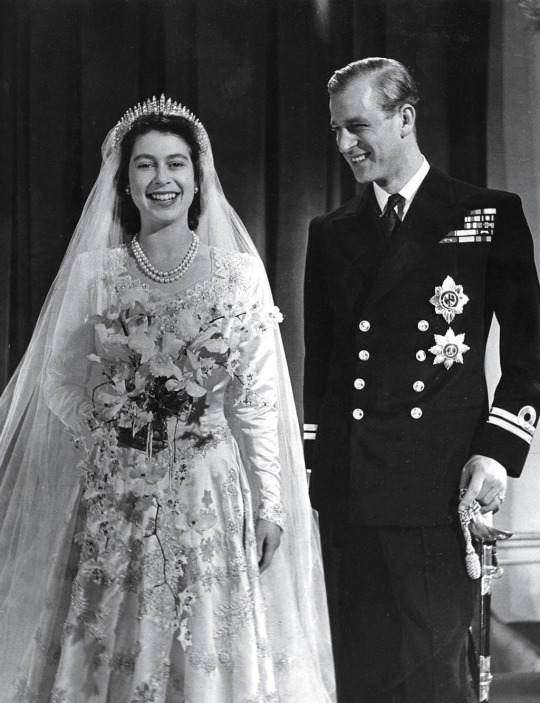
Years later, in 1994, Prince Charles would allow his authorized biographer to disclose that the prince felt “emotionally estranged” from his parents. Close friends found the Duke’s behavior “inexplicably harsh” and called his manner toward Charles “very bullying.” His mother, the Queen, seemed “detached.” Elizabeth and Philip were reported to be hurt by this disclosure. Publicly, only Philip would comment: “We did our best.” Princess Anne exercised less restraint, defending Elizabeth from rumors that she was remote. “I simply don’t believe that there is any evidence whatsoever to suggest that she wasn’t caring,” she said in 2002. Yet even Anne might have acknowledged a warmth that was sometimes wanting on her part later in life—when a little more compassion, a little more kindness, might have been called for.
The early 1990s would bring all kinds of personal problems to the fore—most notably in 1992, which the Queen famously described in a speech as an “annus horribilis” (horrible year). This was the year when her second son, Andrew, separated from his wife Sarah; when daughter Anne divorced her husband Mark Phillips; when her son Charles and his wife Diana increasingly became a tabloid issue; and when public concern grew about the cost of the monarchy and who would pay to repair Windsor Castle, which caught fire that year.
The damage was significant. The Nov. 20 fire—on the Queen’s 45th wedding anniversary—gutted the northeast corner of the castle, parts of which were more than 900 years old. It took 250 firefighters 15 hours to bring it under control. In the end more than 100 rooms, covering an area of 1.7 acres, were damaged. When British citizens learned that they were about to foot the bill for repairs to Windsor Castle—to the tune of up to $78 million—they grumbled. Elizabeth rectified the issue by volunteering to pay income and capital gains tax from her private investments. It hurt, but not too much: Her net worth remained at about $500 million.
But these were simply matters of state. Matters of the heart caused greater grief for Elizabeth—particularly the travails of Charles and Di. Their courtship and 1981 marriage captivated the nation, if not the world. No less an authority than the Archbishop of Canterbury proclaimed, “Here is the stuff of which fairy tales are made: the Prince and Princess on their wedding day.” But infidelity would intrude on both sides, and the ability to maintain the pretense of marriage for the sake of appearances became impossible. On Aug. 24, 1992, the transcript of a phone conversation between Diana and a close friend was published in the Sun, with Diana describing life with Charles as “real torture,” and saying she had caught the Queen Mother watching her “with a strange look in her eyes.” Diana and her young sons, William and Harry, continued to reside at Kensington Palace, while Charles’ relationship with Camilla Parker Bowles was parsed by the tabloid press. The Prince and Princess of Wales officially separated on Dec. 9.
Diana’s decision to grant an interview to the BBC on Nov. 20, 1995, in which she confessed that she had been unfaithful to Charles, had upset the royal family, and Queen Elizabeth in particular. (Of course, Charles had admitted his own infidelity on a TV documentary the previous year, as Diana noted in the interview.) Within a month, the Queen wrote to both Charles and Diana, urging them to agree to an early divorce. Buckingham Palace released a statement saying Charles favored the divorce, but there was no official word from Diana. In February 1996—more than a year before Diana, her romantic partner Dodi Fayed, and driver Henri Paul died in a car crash while being pursued by the paparazzi—she finally released her own statement saying she was ready to divorce too.
It took time for Elizabeth—a woman married seven decades to the same man—to adjust to modern mores. A longtime sticking point was Charles’ future bride Camilla; the press noted that Elizabeth was not enamored of her son’s consort. A shift occurred in 2002, when, by bringing Camilla to events celebrating Elizabeth’s 50 years on the throne, Charles provided strong evidence that he was gaining ground in his campaign to officially bring Camilla into the family fold.

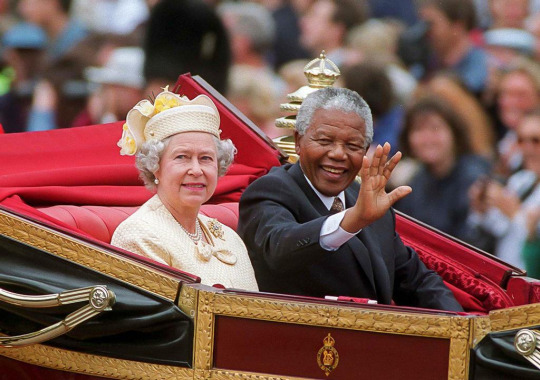



Charles and Camilla got engaged around Christmas 2004, and before long the Queen issued a statement saying, “The Duke of Edinburgh and I are very happy that the Prince of Wales and Mrs. Parker Bowles are to marry.” She and Prince Philip did not attend their wedding at Windsor Guildhall on April 9, 2005, but they did attend a blessing of the couple at St. George’s Chapel in Windsor Castle and held a reception for them at the castle.
A more festive wedding—and one more in keeping with Elizabeth’s sense of tradition—took place on April 29, 2011, when Elizabeth’s grandson William married Kate Middleton in a lavish ceremony at Westminster Abbey. And she remained her regal self at Prince Harry and Meghan Markle’s more modern wedding at Windsor Castle in 2018, which included a fiery sermon delivered by Bishop Michael Curry of Chicago, the first African American head of the Episcopal Church in the U.S.
But in a televised interview with Oprah Winfrey in March 2021, Harry and Meghan alleged that racism had tarnished their relationship with the Windsors. While the press hounded Meghan as they did Harry’s late mother, “no one from my family ever said anything,” Harry said.
The family was once again thrust into the spotlight when allegations surfaced about Andrew’s relationship with the late sex offender Jeffrey Epstein. Andrew stepped back from royal duties in late 2019, and in 2021 was served with a lawsuit by Virginia Giuffre, one of Epstein’s victims, who accused Andrew of sexually abusing her when she was 17. According to the Daily Telegraph, the Queen contributed millions to her son’s legal defense, and agreed to contribute £2 million ($2.7 million) to a survivor-support charity as part of a settlement.
But family was also a source of comfort. As the Queen neared the end of her life, she doted on her grandchildren and great-grandchildren. “In a small room with close members of the family, then she is just a normal grandmother. Very relaxed,” Harry said before he and Meghan stepped back as working royals in early 2020. “She obviously takes a huge interest in what we all do.”




EVEN AFTER SHE ENTERED her ninth decade, Elizabeth continued with her royal duties, despite her age and a rapidly changing world.
For nearly all her reign, the Queen would read a selection of the 200 to 300 letters that she received daily, as well as review official papers and documents sent her way from government ministers and her representatives in foreign countries. Until she was forced to slow down by mobility issues and bouts of ill health, she would have 10- to 20-minute audiences with ambassadors, commissioners, and other officials, and there would be her weekly visit from the British Prime Minister.
Despite growing republican movements within the Commonwealth realms, the Queen herself remained a hugely popular figure in both the U.K. and beyond. And she remained a force for good, offering messages of inspiration and optimism in even the most trying times. In one of her last annual Christmas Day messages, she urged her subjects in Britain and across the Commonwealth to draw inspiration from “ordinary people doing extraordinary things.”
To many, she embodied the steadfastness she urged in others. At Prince Philip’s funeral, held shortly after he died on April 9, 2021, after 73 years of marriage, the monarch solemnly sat alone in a pew at Windsor Castle because of coronavirus restrictions. The image became instantly iconic, and further burnished her legacy as a stoic leader through good times and bad.
The Queen has been a constant figure in most of the British public’s living memory. Difficulty moving prevented her from attending the majority of Buckingham Palace’s Platinum Jubilee celebrations, as the nation in June 2022 marked her 70th year on the throne—a first for a British monarch. But community celebrations were widespread across the U.K. Some 16,000 official street parties were organized, and almost 17 million people—about 1 in 4 Brits—took part in events.
The Queen did not lead an ordinary life, but she filled it with inspiring acts of duty both public and private—whether carrying out the requirements of the state from the trappings of the throne, or giving quiet words of encouragement to a well-wisher in a crowd. She “has been a rock of stability in an era in which our country has changed so much,” said Britain’s former Prime Minister David Cameron. “And we could not be more proud of her. She has served this country with unerring grace, dignity, and decency.” —With reporting by ELOISE BARRY, KATHY EHRICH DOWD, MADELINE ROACHE, and YASMEEN SERHAN

PHOTOGRAPH BY © CECIL BEATON—VICTORIA AND ALBERT MUSEUM, LONDON
TOPICAL PRESS AGENCY/GETTY IMAGES
1956: INTERCONTINENTALE—AFP/GETTY IMAGES; 2019: PA WIRE/AP; SUCCESSION: GETTY IMAGES (13)
1941: LISA SHERIDAN—STUDIO LISA/GETTY IMAGES; 1945: MIRRORPIX/GETTY IMAGES
1947: HISTORIA/SHUTTERSTOCK; 1961: FOX PHOTOS/GETTY IMAGES
LEFT TO RIGHT, FROM TOP LEFT: JULIAN PARKER—UK PRESS/GETTY IMAGES; GEORGE SKADDING—THE LIFE PICTURE COLLECTION/SHUTTERSTOCK; UNIVERSAL HISTORY ARCHIVE/GETTY IMAGES; TOM STODDART—GETTY IMAGES; GAMMA-KEYSTONE/GETTY IMAGES; TIM GRAHAM PHOTO LIBRARY/GETTY IMAGES; BETTMANN ARCHIVE/GETTY IMAGES; JANE BARLOW—POOL/AP
PHOTOGRAPH BY MAX MUMBY—INDIGO/GETTY IMAGES
29 notes
·
View notes
Quote
The brilliance of Nike’s marketing strategy was in the way the company forged a unique connection between the athlete and those who wear the brand. To create a shoe around Jordan’s foot was to symbolically transfer the celebrity’s charisma to adoring consumers. In this way, the commodity is sacralized through association with the athlete who is already an idol of worship. The sneaker becomes a holy relic, endlessly reproducible.
The Air Jordan: Legacy of a Popular Relic
6 notes
·
View notes
Photo

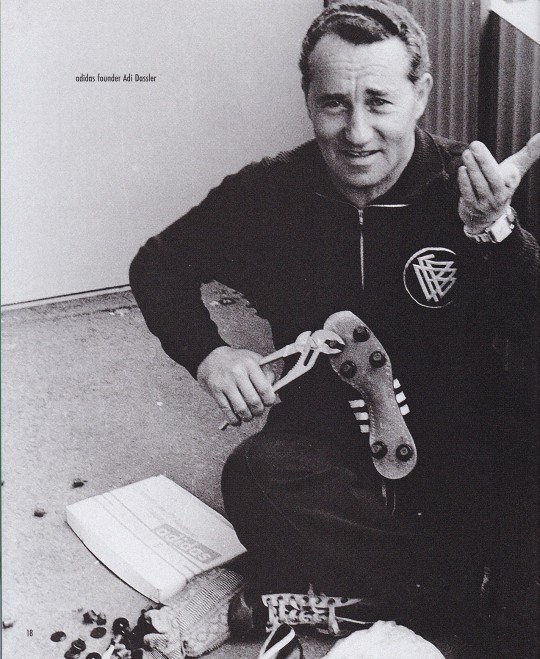








From Soul to Sole
The Adidas Sneakers of Jacques Chassaing
Jacques Chassaing, Foreword by Peter Moore
Rizzoli, New York 2022, 304 pages, Hardcover, 23.42 x 3.3 x 27.2 cm, ISBN: 978-0-8478-7265-7
euro 59,00
email if you want to buy :[email protected]
The definitive book on the creations, career, and legacy of one of the world’s greatest sneaker designers.
Often called the father of modern running and basketball sneakers, Jacques Chassaing has shaped and influenced sports and street fashion like few designers ever will. For the first time, Chassaing reveals the story behind the forty-year career of a pioneering designer who has continually pushed boundaries and led the creation of many of the world’s most beloved sneakers.
Chassaing thrills and provokes readers with his life experiences, taking them on a journey of continual evolution and revolution. We learn about those who have inspired him and meet those he has inspired. We discover what drove his design philosophy and the process behind some of the greatest sneakers and sports technology ever created: the Forum, Rivalry, Lendl, Edberg, ZX series, Predator, EQT line, Torsion, and his Porsche Design collabs, to name but a few. And we see how Chassaing’s designs have impacted modern culture and won a place on the feet and in the hearts of millions of people.
This book features stories about and contributions from athletes, celebrities, and designers who have worked with and been influenced by Chassaing and his work, including Michael Jordan, Stefan Edberg, Patrick Ewing, Run DMC, Gary Aspden, Paul Gaudio, and many more.
Art directed by Peter Moore, designer of the Nike Air Jordan 1 and creator of the adidas Originals line, From Soul to Sole is a story, a statement, an experience, and a celebration of a life and career that is still impacting how we think about sneakers and street fashion design today. Jacques Chassaing is one of the most respected and admired sports shoe designers in the world.
24/12/22
orders to: [email protected]
ordini a: [email protected]
twitter: @fashionbooksmi
instagram: fashionbooksmilano, designbooksmilano tumblr: fashionbooksmilano, designbooksmilano
#Adidas#sneakers#Jacques Chaissaing#Peter Moore#sport & street fashion#shoes books#fashion books#fashionbooksmilano
13 notes
·
View notes
Text

GREEN LANTERN #5
Written by JEREMY ADAMS and PETER J. TOMASI
Art by XERMANICO and DAVID LAFUENTE
Cover by XERMANICO
Variant cover by EVAN “DOC” SHANER
1:25 variant cover by RICCARDO FEDERICI
1:50 variant cover by FRANCESCO TOMASELLI
Artist Spotlight variant cover by MIKE DEODATO JR.
$4.99 US | 40 pages | Variant $5.99 US (card stock)
ON SALE 11/14/23
The Rage of Thaal Sinestro!
Sinestro has seized control of Ferris Air! As the rage builds to cataclysmic levels within Hal Jordan’s most vicious adversary, the power of the Red Lantern ring has turned Sinestro’s wrath into a planetwide fury! Hal’s only hope? To break United Planets law and lure the villain out into the final frontier…
Then, in “Rise of the Sinson: Part Two”, Sinson’s plan becomes clear: to claim his legacy, he must seek out his father…and face him in combat! The march toward Sinister Sons continues in this epic prequel installment!
4 notes
·
View notes